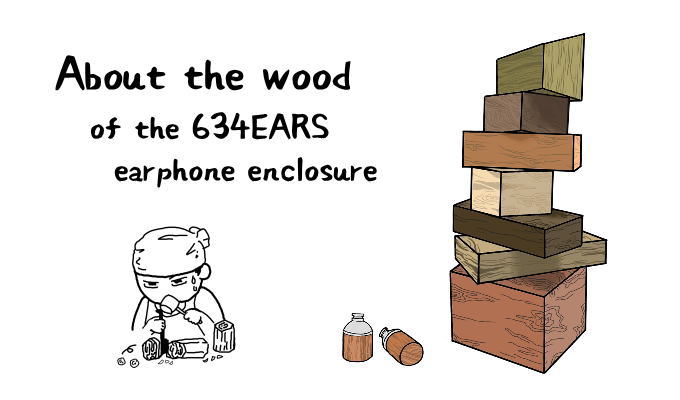
1) About the wood of the earphone enclosure.
Many models of 634EARS earphones use wood.
The sound of the earphones changes slightly depending on the type of wood. That is very interesting.
1-1)Pros and cons of using wood.
Wood has individual differences even in the same type of wood.
This means that 100% of the sound will not be known until the earphones are completed.
This is also a disadvantage.
However, the individual differences will make your earphones unique to you in this world.
This is one of the great pleasures and advantages in enjoying earphones.
1-2) Important notice.
This page briefly describes the differences between woods, but what is written here is not 100% correct because of individual differences in woods.
Please understand this and use it as a “reference” for your wood selection.
2) Differences in Sound by Wood.
2-1) Specific Gravity & Hardness
The specific gravity and hardness of the wood mainly affect the sound of the earphones.
Here are some examples
Specific gravity (Density, Weight)
Hardness (Young’s modulus)
However, it is not possible to express a fixed number for one type of wood because of individual differences in wood.
The hardness and weight will vary depending on the dryness of the wood and the oil content.
Also, the method of measuring specific gravity and hardness is not 100% accurate, as the standards are ambiguous.
Therefore, specific gravity and hardness values should be used only as a reference.
2-2) How much difference does the choice of wood make to the sound of the earphones?
The percentage of wood used in earphones is about 10%-50% of the total earphones. This varies depending on the earphone model.
It is important to note that changing the wood will not significantly change the sound of the earphones.
However, the choice of wood will change about 10-20% of the earphone’s sound.
10-20% of the total is a very large number.
Your choice of wood will make the earphones sound the way you like.
2-3) Sound Tendency by Wood.
The sound of wood cannot be quantified. Therefore, it is very difficult to simply describe the sound.
However, there are some general trends.
Specific gravity (Density, Weight) is higher, which tends to produce a stronger, denser, heavier sound.
Hardness Harder (Young’s modulus) tends to produce a tighter, edgier sound.
2-4) Sound characteristics of each wood.
For each wood description, specific gravity and hardness are expressed in five levels.
The higher the number, the higher the specific gravity and the harder the wood.
Lower values are lighter and softer.
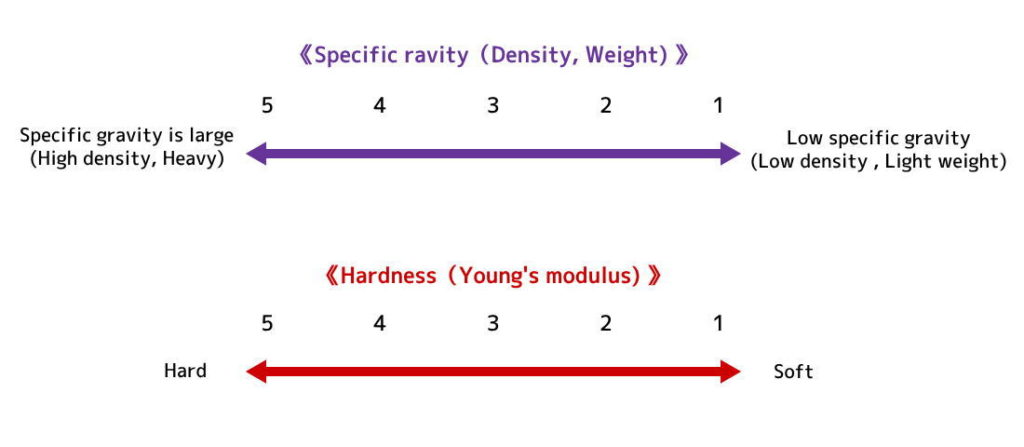
Let us now describe each wood.
1) Karimantan Ebony
2) Indian Rosewood
3) Snake wood
4) African blackwood
5) Cocobolo
6) Granadillo
7) Olive wood
8) Pink Ivory
9) Ziricote
10) Purpleheart
11) Beef wood
12) Buckeye Burl
13) Amboyna Burl
14) Yakusugi
15) Stabilized wood
16) Desert iron wood
Other woods
1) Karimantan Ebony
Specific gravity(Density, Weight) : 5
Hardness(Young’s modulus) : 4
The sound is thick and strong. It is a little oily.
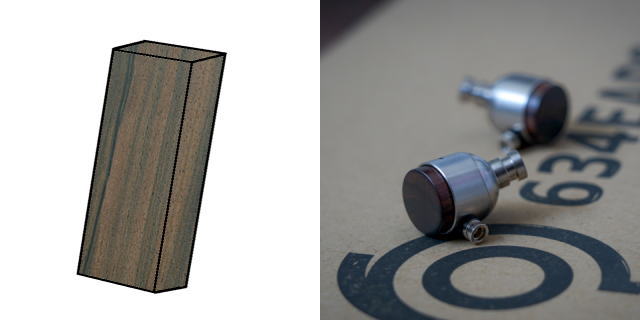
2) Indian Rosewood
Specific gravity(Density, Weight) : 4
Hardness(Young’s modulus) : 3
A little warm sound. It has a wood-like resonance.
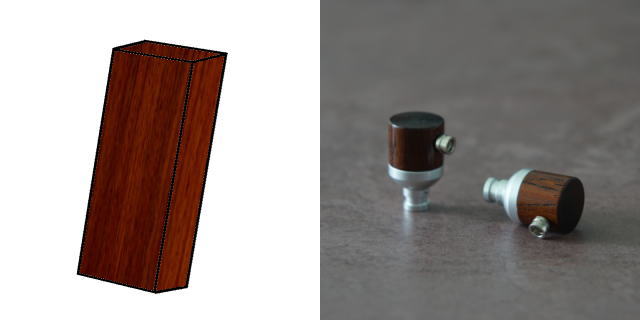
3) Snake wood
Specific gravity(Density, Weight) : 5
Hardness(Young’s modulus) : 5
This is one of the hardest woods.
Bright and tight sound. Clear sound.

4) African blackwood
Specific gravity(Density, Weight) : 5
Hardness(Young’s modulus) : 5
High contrast sound. It has a deep and strong sound.

5) Cocobolo
Specific gravity(Density, Weight) : 5
Hardness(Young’s modulus) : 4
Cocobolo is a wood with high oil content.
The sound is high in contrast, but a little subdued.
It has a slightly warm sound.

6) Granadillo
Specific gravity(Density, Weight) : 4
Hardness(Young’s modulus) : 4
The sound has warmth.
It has an analog-like sound. Calm and coherent sound.

8) Pink Ivory
Specific gravity(Density, Weight) : 5
Hardness(Young’s modulus) : 4
Very beautiful vermilion color. Smart and beautiful sound.

9) Ziricote
Specific gravity(Density, Weight) : 4
Hardness(Young’s modulus) : 4
Sharp and light sound. It has a sharp sound.

10) Purpleheart
Specific gravity(Density, Weight) : 4
Hardness(Young’s modulus) : 4
This is a deep and heavy sound. Recommended for models with strong bass.

11) Beef wood
Specific gravity(Density, Weight) : 4
Hardness(Young’s modulus) : 4
The sound is light and crisp. It is similar to Ziricote, but a little lighter.

12) Buckeye Burl
Specific gravity(Density, Weight) : 1
Hardness(Young’s modulus) : 1
Very soft wood. It is like cork. Mild and soft sound.
Individual differences are very large.
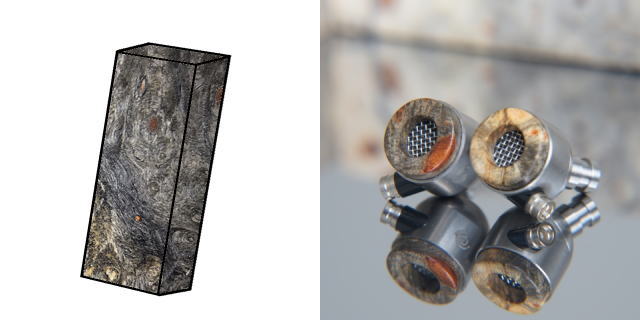
13) Amboyna Burl
Specific gravity(Density, Weight) : 2
Hardness(Young’s modulus) : 3
Soft sound. Individual differences are very large.
Individual differences are large in all of the burl woods.
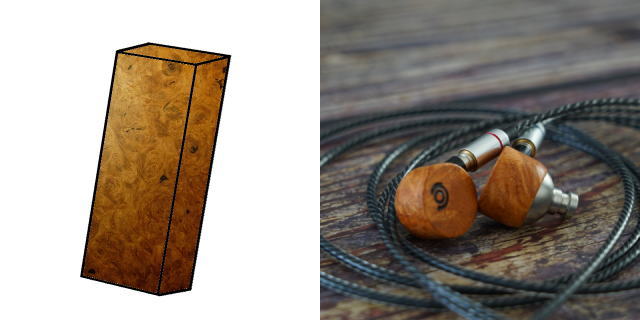
14) Yakusugi
Specific gravity(Density, Weight) : 2
Hardness(Young’s modulus) : 3
Very light and smart sound.
It lacks power, but the sound is crisp. Pleasant bouncy sound.
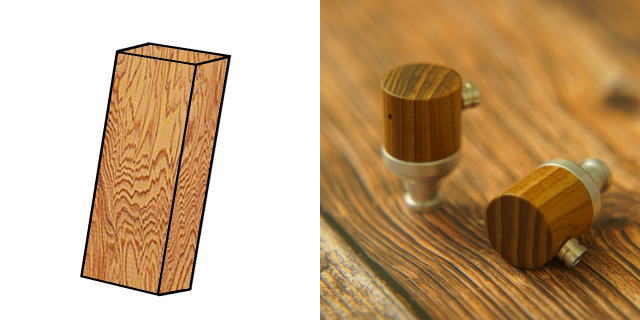
15) Stabilized wood
Specific gravity(Density, Weight) : ?
Hardness(Young’s modulus) : ?
This material is closer to resin than wood.
It has a deep sound, but the tone is a little dark.

16) Desert iron wood
Specific gravity(Density, Weight) : 5
Hardness(Young’s modulus) : 5+
Desert iron wood (bog-wood).
It is hard like a fossil. Very tight and smart sound.
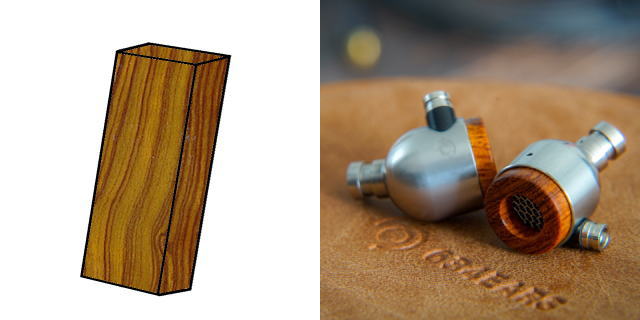
Other woods)
There are many other woods, but it will be easier to imagine the sound if you check the specific gravity and hardness of the wood and compare it to the woods listed here.
Now that you know a little bit more about wood, how do you choose the right wood for your earphones?
No matter how much you learn about wood in advance, you will not know 100% of the sound until the earphones are completed, so it is a good idea to select wood based on both sound and appearance.
Wood is sometimes used for musical instruments, speakers, and headphones, but since earphones are so small, wood that cannot be used for those can be used for earphones. Therefore, there are many choices.
I hope you will enjoy selecting the wood that will be used for the housing of your earphones.
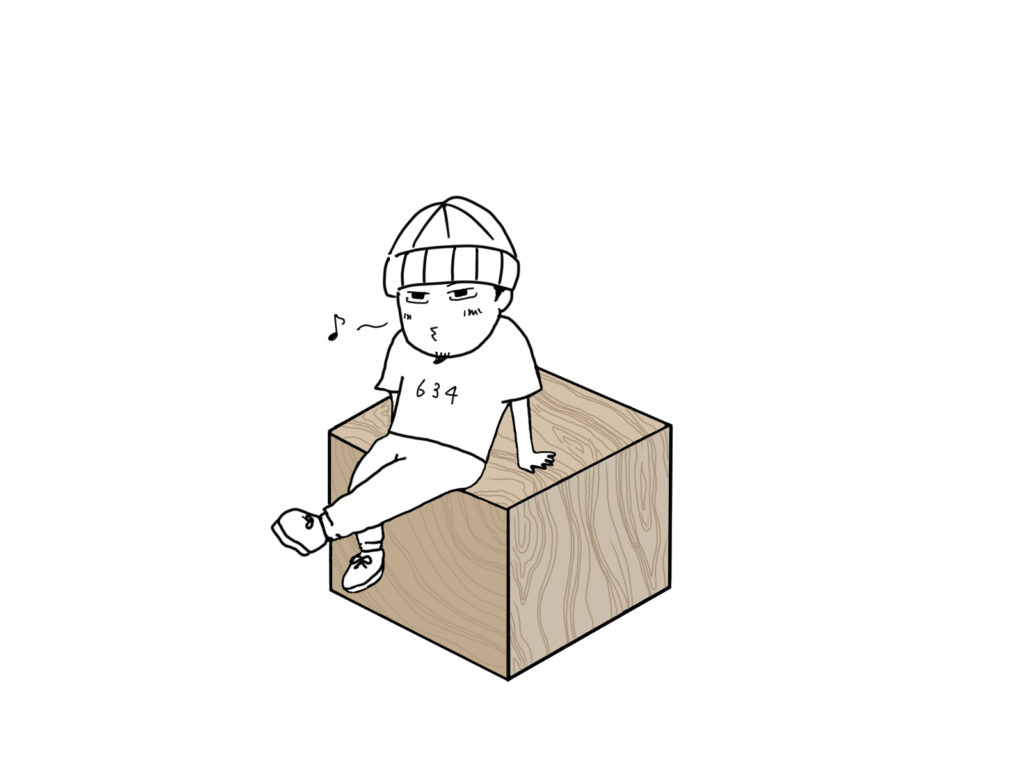


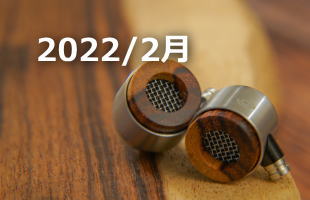
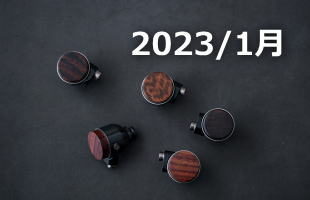
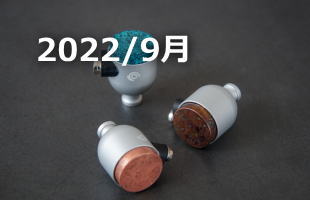
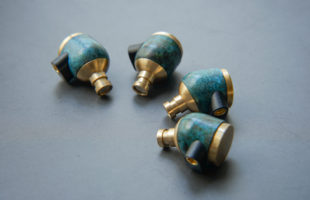
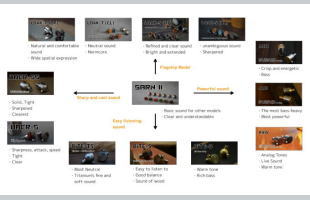


この記事へのコメントはありません。